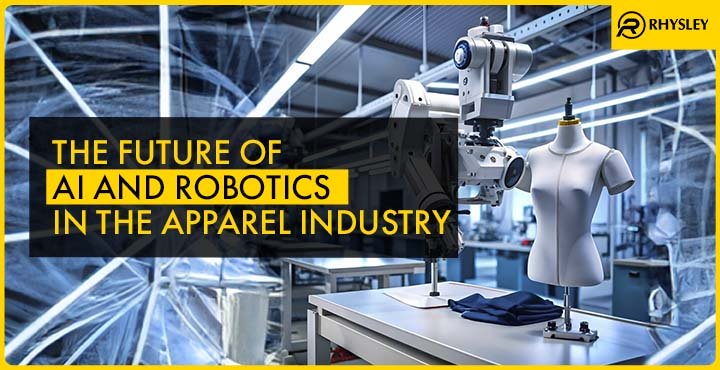
The Future of AI and Robotics in the Apparel Industry
In recent years, the manufacturing industry has undergone rapid changes, particularly with the integration of artificial intelligence and robotics. Take the apparel industry, for example. It has long been dependent on manual labor, but now it’s on the brink of a major technological shift.
This wave of innovation is not just about machines taking over tasks; it’s reshaping how garments are produced, how supply chains operate, and how quality is maintained across the board.
As these advancements unfold, they promise to enhance efficiency and transform the way we think about clothing production worldwide.
The Evolution of Robotics in Garment Manufacturing
The world of apparel manufacturing has long relied on the hard work and skill of human hands, with workers performing a variety of tasks, from cutting fabrics to sewing and finishing garments.
But as technology advances, the landscape is shifting dramatically. Today, robotics are stepping in to revolutionize the industry.
Modern robotic systems can now handle delicate fabrics with an accuracy that was once thought impossible. They perform intricate tasks, such as:
- Automatically cutting fabric with minimal waste
- Stitching complex patterns with precision
- Inspecting quality using advanced computer vision
- Handling and transporting materials efficiently
These advancements are allowing clothing manufacturers to achieve levels of consistency and efficiency never before seen.
For example, a prominent apparel maker in Asia recently reported a staggering 40% boost in production capacity after adopting robotic sewing stations. This showcases just how transformative these technologies can be.
AI-Powered Robotics: The Cornerstone of Modern Production
As we look to the future, the integration of artificial intelligence with robotic systems is setting the stage for the next leap forward in the apparel industry.
These intelligent systems do more than just automate tasks; they adapt and learn, fundamentally changing how production operates.
Today’s AI algorithms empower robotic systems to:
- Analyze fabric properties and adjust handling techniques
- Spot and correct quality issues in real-time
- Optimize production schedules based on demand forecasts
- Minimize material waste with smart cutting patterns
This combination of AI and robotics is paving the way for what experts refer to as “intelligent manufacturing.” These production systems are designed to learn and adapt continuously, often without the need for human intervention.
Read More: How AI is Transforming the Garment Manufacturing Industry in 2025
Preparing for a Future-Ready Garment Production
As robotics and AI continue to evolve, clothing manufacturers need to position themselves to harness these advancements effectively. Forward-thinking companies are investing in:
- Collaborating with technology providers for research and development
- Training programs to upskill their workforce
- Modular production systems that can integrate new technologies
- Robust data infrastructure to support data-driven decision-making
These strategic investments are crucial for manufacturers who want to stay competitive in a tech-driven market. The future of garment production isn’t about replacing human workers but rather fostering a collaborative environment where humans and machines team up for better results.
Challenges and Opportunities
While the promise of AI-driven robotics in the clothing industry is exciting, challenges remain. High initial investment costs can deter smaller manufacturers, and integrating new technologies often requires significant changes within the organization.
However, these challenges come with remarkable opportunities. Manufacturers who successfully implement these technologies can expect to see:
- Shorter production times
- Higher quality and consistency in products
- Greater flexibility in meeting market demands
- Improved sustainability through reduced waste and energy use
The future of apparel manufacturing will be shaped by those who can navigate this technological transformation, balancing the push for innovation with practical implementation.
Looking ahead, it’s clear that AI and robotics will continue to redefine how garments are produced.
The most successful manufacturers will embrace these technologies not just as tools but as essential assets that enhance their quest for excellence and competitive advantage in an ever-changing global market.